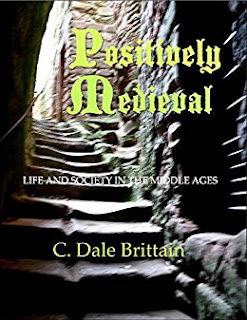It's back to school time! Except for now, in the era of pandemic, a lot of schools are being delayed or carrying out teaching on-line (obviously impossible in the Middle Ages, or for that matter the twentieth century). Did schools open in September in the twelfth century?
Short answer, no. For starters, there were no public schools. In fact, what we think of as normal, that is more-or-less universal education provided at public schools, appeared for the first time in the nineteenth century. And it was not until the 1960s that a concerted effort was made to get everybody even in the US into school until they turned 18.
Now, in the midst of pandemic, there is a great deal of concern about the need for education, complete with dire threats about how children will be hurt if they can't get back in the classroom. Medieval parents would have been surprised to hear that their children would suffer permanent harm by not attending school.
Medieval schools were all associated with churches. Monasteries and nunneries all had schools attached where children who joined, as their parents' offering to God, would get a good classical education. They would need it when they grew up to be monks or nuns. The less-strict monasteries, cathedrals, houses of canons regular, and nunneries would often offer an education to day-students as well, ones who did not intend to enter the cloister themselves but who wanted at least a little education. These schools ran all year, rather than fall through spring. It was of course expected that parents would pay for them.
As Europe was overwhelmingly Christian, these schools taught Christianity along with reading, arithmetic, and a little history and geography and music. Europe's Jewish and Muslim minorities had their own schools. There were no "atheist" schools. Medieval people would not have understood why schools today can't teach religion, just as they wouldn't be able to grasp the separation of church and state.
Both aristocrats and well-to-do townspeople would send their children as day-students to these church-connected schools. But this was usually not the children's first experience with education. Mothers would teach their children the rudiments of reading and figuring when they were five or six, just as mothers still often do. Note that this is one of many indications of the important role played in society then by medieval women.
When students got to school, initially all learning was in Latin. At a minimum they would be able to read Latin; the best-educated would also be able to write. Note that being able to read and able to write are two different skills, even though we now group them together (see more here on medieval literacy). By the late twelfth century, a lot of schooling started taking place in the vernacular, Old French, Old Italian, Middle High German, or whatever. Young aristocrats seem more inclined to be able to write in their normal spoken language than in Latin (not surprising). Many composed stories and poems.
But how about the great mass of the population that was not aristocratic and did not intend their children for careers in the church? They never went to a formal school or learned to read and write. Modern schools have summers off, which is left over from nineteenth-century efforts to get the farmer's children to attend (children were needed to help on the farm in the busy growing season). If medieval peasants had to agree to a formal agreement, they would make a mark on the parchment in place of a signature, usually an unsteady short line.
This did not mean that they were ignorant. They might have quite advanced technical skills. Farming is hard. So is being a miller, a baker, a brewer, a blacksmith, a wheelwright, a mason, or the other skilled trades that a peasant village needed. These people would know basic figuring and would know how to keep track of things (like money), even if they knew no Latin.
Education expanded in the late Middle Ages, especially in Renaissance Italy, but it was still something for townspeople, not for peasants. Parents would send their son off to school with a servant, who was supposed to learn along with the boy and beat him if he didn't do his homework.
Starting in the twelfth century, the ambitious young man (not woman) might want to continue his education at a university. Basic schooling would be over by age 14 or so, and it was off to the university, to learn complicated subjects, like theology or Roman law or medicine, and to drink and have fun. University students were primarily from families of well-to-do townspeople. The Sorbonne in Paris, pictured below (though this is a post-medieval building), was the most prestigious medieval university. (See more here on medieval universities.)
© C. Dale Brittain 2020
For more on medieval social history, see my book, Positively Medieval: Life and Society in the Middle Ages, available on Amazon and other e-tailers, either as an ebook or in print.


No comments:
Post a Comment